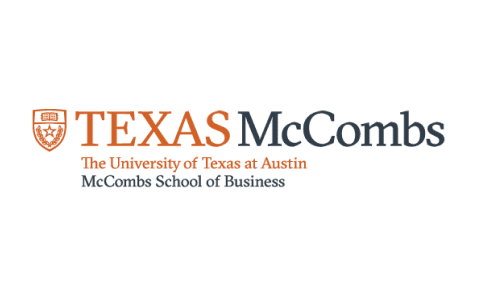Learn Data Structures and Algorithms in Java
Data Structures & Algorithms in Java
This free course on Data Structures & Algorithms in Java taught by industry excerpts helps you learn the basic concepts such as Complexity, Recursion, and the Tower of Hanoi. Best for Beginners. Start now!
Instructor:
Mr. Vishwa Mohan
Ratings
Level
Learning hours

Learners
Skills you’ll Learn
About this course
Learn to store and organize data efficiently through this free Data Structures and Algorithms in Java course. You will first learn about data structures and their significance. You will then get familiar with algorithms and time complexity. Further, you will understand recursion in depth. You will learn about the recursive functions, recursive tree, and internal mechanism of recursion.
The example of the Tower of Hanoi will help you comprehend it better. Lastly, you will go through sorting algorithms in detail. Enroll in this free Data Structures and Algorithms in Java course and gain a certificate.
Realize your career goal of acquiring advanced software skills with Great Learning's well-established Software Development Courses. Enroll in the top programs of your interest and achieve certificates of course completion.
Course Outline
A data structure is a method of arranging data to be used effectively. This module focuses on introducing you to Data Structures.
Data Structures are the backbone of any programming language. This module explains the significance of Data Structures.
This module introduces you to the algorithm and its role in coding.
Time Complexity represents the number of times a statement gets executed. This module explains time and space complexity, and you will learn to find algorithms' time and space complexity.
This module gives you a better understanding of time complexity with the help of the code example.
 UPGRADE
UPGRADE
Recommended university programs
Our course instructor

Mr. Vishwa Mohan
Sr. Software Engineer, Ex-Walmart, Ex- Paypal, IIT-BHU Alumnus
IT & Software Expert
A Software engineer with 9+ years of experience working in major product companies like Walmart, Paypal, Oracle, etc. He also has a passion for mentoring students and helping professionals crack their dream jobs in Software Engineering.
Frequently Asked Questions
Will I receive a certificate upon completing this free course?
Is this course free?
What prerequisites are required to learn this Data Structures and Algorithms in Java course?
This is a beginner's course, and learners can start learning it from scratch without prior knowledge.
How long does it take to complete this free Data Structures and Algorithms in Java course?
This free course contains four hours of video content that can be completed according to the learner's pace.
Will I have lifetime access to the free course?
Any learners who wish to revisit our free course can do so at any time and brush up on their knowledge of Data Structures and Algorithms in Java.
Other IT & Software tutorials for you
Java Data Structures
What is Data Structure?
The literal meaning of data structures is organizing the data in memory. There are various ways by which one can organize the data in memory; one example is an array. Array in java is a collection of memory elements where data is sequentially stored. In other words, the array stores elements in a continuous manner. There are other many other ways to organize data in memory, which are:
- Primitive data structure
- Non-primitive data structure
Primitive Data Structure
The primitive data structures are primitive data types that include int, char, float, double, and pointer. These primitive data structures can hold a single value.
Non-Primitive Data Structure
The non-primitive data structure is divided into two types:
- Linear data structure
- Non-linear data structure
The arrangement of data in a sequential manner is known as a linear data structure. The data structures used for this purpose are Arrays, Linked lists, Stacks, and Queues. In these data structures, one element is connected to only one another element in a linear form.
Data structures can also be classified as:
- Static Data Structure: The size of static data structures is allocated at the time of compiling, and therefore, the maximum size is fixed. That is the reason it is called a static data structure.
- Dynamic Data Structure: The size of the dynamic data structures is allocated at the run time, and therefore, the maximum size is flexible. That is the reason it is called a dynamic data structure.
Benefits of Data Structures
Data Structures possess various advantages for professionals in the field of Java development. The reasons one should learn Data Structures and Algorithms are:
- Efficiency- Given the choice of the data structure for implementing a particular ADT is the right one, and it makes the program efficient for time and space.
- Reusability- Data Structures provide reusability as multiple programs can use the same data structures.
- Abstraction- The Data Structure provides a level of abstraction where clients cannot see the internal working of data structure and hence do not have to worry about its implementation.
What is an Algorithm?
Algorithms were historically used as mathematical computation tools that are deeply connected with computer science and data structures. An algorithm is a sequence of instructions followed to accomplish a task in a specified time period. They have some values that are mentioned below:
- Receive zero or more inputs
- Produce one or more outputs
- Consist of clear instructions, no ambiguity
- Terminates after a finite number of steps
While programs might be algorithmic in nature, some programs would not terminate without external intervention. There are criteria for code sequences to qualify as algorithms. One example of a code sequence that qualifies as an algorithm is the one that prints a report. Another example is Euclid’s algorithm, which calculates the mathematical greatest common divisor. Essentially, algorithms are a data structure’s basic operations.
About The Program
The Java Data Structures course curriculum covers the basics of data structures and algorithms in Java. The algorithms covered in detail are recursion, searching, sorting, and more. It will also cover the various data structures and algorithms in Java concepts such as Arrays, Linked Lists, Stacks, and Queues. The concepts are taught with hands-on coding exercises and practical learning.
The instructor will also help you prepare for coding interviews by helping you tackle common coding problems. The Data Structures and Algorithms free course will help you learn the concepts and prepare for employment in the Java coding domain. You will also understand the nuances of the calculation of complexity in a code.
Upon completing the data structures and algorithms in the Java free course, you will receive a certificate by Great Learning that you could update on your LinkedIn profile and resume.































.jpg)


.jpg)







